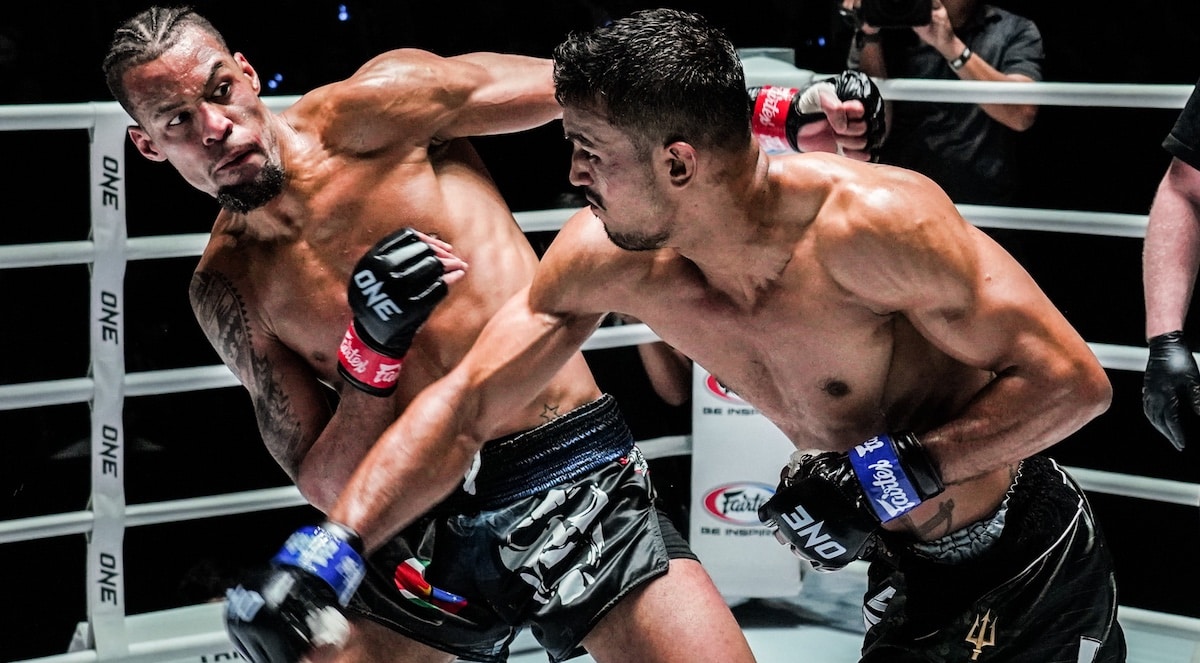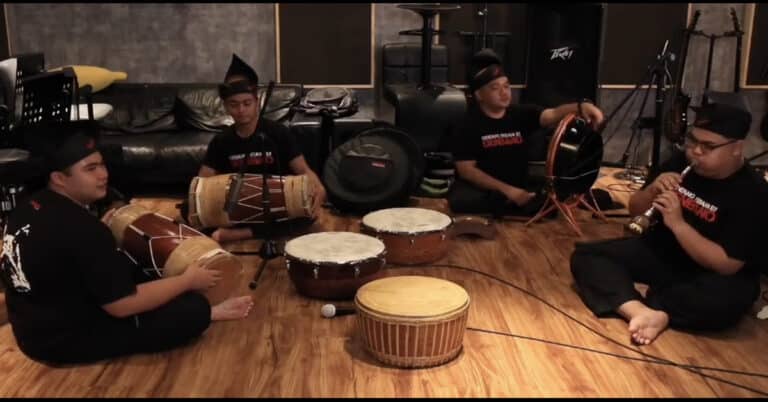Muay Thai Weight Classes: Explained
There are several different types of Muay Thai weight classes around the world. With so many international organizations, it can sometimes be difficult to keep track of all the varying Muay Thai weight classes.
Muay Thai organizations typically use different names for weight divisions and varying weights. It can be confusing to keep track of the Muay Thai Weight Classes in every organization around the globe.

What are the weight classes in Muay Thai? Here we have compiled all major Muay Thai organizations and their weight classes.
WBC Muay Thai Weight Classes
What are the Muay Thai weight classes in World Boxing Council (WBC)?
Male Divisions
| Weight Class Name | Kilograms | Pounds |
| Heavyweight | 91 kg+ | 200 lbs+ |
| Cruiserweight | 90.719 kg | 200 lbs |
| Light Heavyweight | 79.379 kg | 175 lbs |
| Super Middleweight | 76.204 kg | 168 lbs |
| Middleweight | 72.575 kg | 160 lbs |
| Super Welterweight | 69.853 kg | 154 lbs |
| Welterweight | 66.678 kg | 147 lbs |
| Super Lightweight | 63.503 kg | 140 lbs |
| Lightweight | 61.235 kg | 135 lbs |
| Super Featherweight | 58.967 kg | 130 lbs |
| Featherweight | 57.153 kg | 126 lbs |
| Super Bantamweight | 55.338 kg | 122 lbs |
| Bantamweight | 53.524 kg | 118 lbs |
| Super Flyweight | 52.163 kg | 115 lbs |
| Flyweight | 50.802 kg | 112 lbs |
| Light Flyweight | 48.988 kg | 108 lbs |
| Minimumweight | 47.627 kg | 105 lbs |
Female Divisions
| Weight Class Name | Kilograms | Pounds |
| Super Lightweight | 63.5 kg | 140 lbs |
| Lightweight | 61.235 kg | 135 lbs |
| Super Featherweight | 58.967 kg | 130 lbs |
| Featherweight | 57.153 kg | 126 lbs |
| Super Bantamweight | 55.338 kg | 122 lbs |
| Bantamweight | 53.524 kg | 118 lbs |
| Super Flyweight | 52.163 kg | 115 lbs |
| Flyweight | 50.802 kb | 112 lbs |
| Light Flyweight | 48.988 kb | 108 lbs |
| Mini Flyweight | 47.627 kg | 105 lbs |
| Minimumweight | 45.359 kg | 100 lbs |
ONE Championship Muay Thai Weight Classes
What are the Muay Thai weight classes in ONE Championship?
Male Divisions
| Weight Class Name | Kilograms | Pounds |
| Lightweight | 77.1 kg | 170 lbs |
| Featherweight | 70.3 kg | 155 lbs |
| Bantamweight | 65.8 kg | 145 lbs |
| Flyweight | 61.2 kg | 135 lbs |
| Strawweight | 56.7 kg | 125 lbs |
Female Divisions
| Weight Class Name | Kilograms | Pounds |
| Strawweight | 56.7 kg | 125 lbs |
| Atomweight | 52.2 kg | 115 lbs |
Rajademnern Stadium Muay Thai Weight Classes
What are the Muay Thai weight classes in Rajademnern Stadium?
| Weight Class Name | Pounds | Kilograms |
| Middleweight | 160 lbs | 72.5 kg |
| Junior Middleweight | 154 lbs | 69.8 kg |
| Welterweight | 147 lbs | 66.7 kg |
| Super Lightweight | 140 lbs | 63.5 kg |
| Lightweight | 135 lbs | 61.2 kg |
| Super Featherweight | 130 lbs | 58.9 kg |
| Featherweight | 126 lbs | 57.1 kg |
| Super Bantamweight | 122 lbs | 55.3 kg |
| Bantamweight | 118 lbs | 53.5 kg |
| Super Flyweight | 115 lbs | 52.1 kg |
| Flyweight | 112 lbs | 50.8 kg |
| Light Flyweight | 108 lbs | 48.9 kg |
| Mini Flyweight | 105 lbs | 47.6 kg |
Lumpinee Stadium Muay Thai Weight Classes
What are the Muay Thai weight classes in Lumpinee Stadium?
| Weight Class Name | Kilograms | Pounds |
| Heavyweight | + 79.383 kg | + 175 lbs |
| Junior Heavyweight | 79.383 kg | 175 lbs |
| Middleweight | 72.578 kg | 160 lbs |
| Junior Middleweight | 70.764 kg | 156 lbs |
| Welterweight | 66.681 kg | 147 lbs |
| Junior Welterweight | 63.506 kg | 140 lbs |
| Lightweight | 61.238 kg | 135 lbs |
| Junior Lightweight | 58.971 kg | 130 lbs |
| Featherweight | 57.155 kg | 126 lbs |
| Junior Featherweight | 55.341 kg | 122 lbs |
| Bantamweight | 53.526 kg | 118 lbs |
| Junior Bantamweight | 52.166 kg | 115 lbs |
| Flyweight | 50.805 kg | 112 lbs |
| Junior Flyweight | 48.990 kg | 108 lbs |
| Mini Flyweight | 47.629 kg | 105 lbs |
World Muay Thai Council Weight Classes
What are the Muay Thai weight classes in World Muay Thai Council (WMC)?
| Weight Class Name | Kilograms | Pounds |
| Super Heavy Weight | + 95 kg | + 209 lbs |
| Heavy Weight | 95 kg | 209 lbs |
| Cruiser Weight | 86.18 kg | 190 lbs |
| Super Light Heavy Weight | 82.55 kg | 182 lbs |
| Light Heavy Weight | 79.38 kg | 175 lbs |
| Super Middle Weight | 76.2 kg | 168 lbs |
| Middle Weight | 72.58 kg | 160 lbs |
| Super Welter Weight | 69.85 kg | 154 lbs |
| Welter Weight | 66.68 kg | 147 lbs |
| Super Light Weight | 63.5 kg | 140 lbs |
| Light Weight | 61.24 kg | 135 lbs |
| Super Feather Weight | 58.97 kg | 130 lbs |
| Feather Weight | 57.15 kg | 126 lbs |
| Super Bantam Weight | 55.34 kg | 122 lbs |
| Bantam Weight | 53.52 kg | 118 lbs |
| Super Fly Weight | 52.16 kg | 115 lbs |
| Fly Weight | 50.8 kg | 112 lbs |
| Light Fly Weight | 48.99 kg | 108 lbs |
| Mini Fly Weight | 47.62 kg | 105 lbs |
Muay Thai weight classes compared to other combat sports
For multiple organizations, Muay Thai weight classes can be found above. To compare to other combat sports such as boxing, kickboxing, and MMA, see below.
UFC & MMA Weight Classes
What are the UFC weight classes in MMA?
| Weight Class Name | Kilograms | Pounds |
| Heavyweight | Max 120.2 kg | Max 265 lbs |
| Light Heavyweight | 102.1 kg | 205 lbs |
| Middleweight | 83.9 kg | 185 lbs |
| Welterweight | 77.1 kg | 170 lbs |
| Lightweight | 70.3 kg | 155 lbs |
| Men’s Featherweight | 65.5 kg | 145 lbs |
| Women’s Featherweight | 65.8 kg | 145 lbs |
| Men’s Bantamweight | 61.2 kg | 135 lbs |
| Women’s Bantamweight | 61.2 kg | 135 lbs |
| Men’s Flyweight | 56.7 kg | 125 lbs |
| Women’s Flyweight | 56.7 kg | 125 lbs |
| Women’s Strawweight | 52.5 kg | 115 lbs |
GLORY Kickboxing Weight Classes
What are the weight classes in GLORY Kickboxing?
| Weight Class Name | Kilograms | Pounds |
| Heavyweight | Unlimited | Unlimited |
| Light Heavyweight | 95 kg | 209.4 lbs |
| Middleweight | 85 kg | 187.4 lbs |
| Welterweight | 77 kg | 169.8 lbs |
| Lightweight | 70 kg | 154.3 lbs |
| Featherweight | 65 kg | 143.3 lbs |
| Women’s Super Bantamweight | 55 kg | 121.3 lbs |
Boxing Weight Classes
What are the weight classes in boxing?
| Weight Class Name | Kilograms | Pounds |
| Heavyweight | Unlimited | Unlimited |
| Cruiserweight | 90.892 kg | 200 lbs |
| Light Heavyweight | 79.378 kg | 175 lbs |
| Super Middleweight | 76.378 kg | 168 lbs |
| Middleweight | 72.574 kg | 160 lbs |
| Super Welterweight | 69.85 kg | 154 lbs |
| Welterweight | 66.678 kg | 147 lbs |
| Super Lightweight | 63.503 kg | 140 lbs |
| Lightweight | 61.235 kg | 135 lbs |
| Super Featherweight | 58.967 kg | 130 lbs |
| Featherweight | 57.153 kg | 126 lbs |
| Super Bantamweight | 55.225 kg | 122 lbs |
| Bantamweight | 53.525 kg | 118 lbs |
| Super Flyweight | 52.163 kg | 115 lbs |
| Flyweight | 50.802 kg | 112 lbs |
| Light Flyweight | 48.988 kg | 108 lbs |
| Minimumweight | 47.627 kg | 105 lbs |
Olympic Wrestling Weight Classes
Men’s Freestyle Wrestling Weight Classes:
57 kg, 65 kg, 74 kg, 86 kg, 97 kg, 125 kg.
Greco-Roman Weight Classes:
60kg, 67kg, 77kg, 87kg, 97kg, 130kg.
Women’s Freestyle Wrestling Weight Classes:
50 kg, 53 kg, 57 kg, 62 kg, 68 kg, 76 kg.
Muay Thai Weight Classes History
For most of the history of Muay Thai, things such as a playing surface, gloves, and weight classes were not universal. Each region of Thailand would have its own form of Muay Thai along with its own rules. This historical period is called Muay Boran.
Traditionally Muay Thai would be fought in a circle at a temple during festivals. Nak Muays would have either cloth, rope, or nothing across their knuckles.
In the 1920s Muay Thai became formalized under Thai King Rama VI. During this period it earned its name Muay Thai, gloves, rings, rounds, and Muay Thai Weight Classes
Weight classes in boxing were introduced during the 1890s under Queensberry Rules. Then there were only eight base boxing weight classes. Over the next hundred years, they would add dozens more.
In the UFC and MMA, began in the 1990s with no weight classes and it would slowly add more over time.
Weight classes were introduced across all combat sports as a way so that undersized fighters would not be at a disadvantage. Weight classes are so that fighters can compete against opponents of their own size rather than be out-sized in an unfair fight.
Thai Weight Classes
Because most competitors in Thailand are on the smaller side, the best divisions for Muay Thai are between 108 to 135 lbs or 48.99 to 61.24 kg. These are the most prestigious Muay Thai weight classes.
The larger weight divisions are less competitive and typically dominated by farang (foreign fighters). As compared to boxing, MMA, and Kickboxing where the prestige is often concentrated in the heavyweight division.
Weight Cutting in Muay Thai
Just like in Olympic wrestling, boxing, MMA, or kickboxing, Muay Thai fighter will reach their target weight by way of harsh weight cuts. This involves a constant diet in their life. Weeks ahead of the fight a Nak Muay will cut out carbs. A day before weight ins fighters will cut out all food and water and begin sweating out excess water until the desired weight is achieved.
It is typically a careful balancing act to not drain a fighter too much but still have enough size to compete in a desired weight division. Fighters across all combat sports have a weight called the walking around weight, this is their natural weight if they were not fighting. If fighters competed at this walking weight they would be undersized. Fighters normally try to cut weight to get a size advantage over the competition.
Here are more details on weight cutting in combat sports and how it relates to Muay Thai weight classes:
Methods
- Water Weight Reduction: This is the most common method, as water is easier to lose and regain than fat or muscle. This can be achieved through dehydration techniques, such as running in sauna suits, visiting saunas, or limiting water intake.
- Dietary Changes: Fighters may reduce their intake of carbohydrates and sodium to shed water weight. Foods high in water content are also sometimes avoided.
- Lowered Training Intensity: To prevent injury and cope with reduced energy levels during weight cutting, training intensity is usually reduced.
Objectives
- Make Weight: The primary objective is to meet the required weight class, which enables the fighter to compete.
- Rehydration: After the weigh-in, fighters aim to regain as much weight as possible to enter the fight at their optimal size and strength level.
- Tactical Advantage: Though debatable, cutting weight theoretically allows fighters to compete in lower weight classes where they might have a size or strength advantage.
Risks and Controversies
- Health Risks: Drastic weight cutting can cause electrolyte imbalance, acute kidney injury, or severe dehydration, which are potentially life-threatening conditions.
- Performance Impact: Dehydration and rapid weight loss can reduce a fighter’s stamina, strength, and cognitive abilities, potentially affecting their performance negatively.
- Fairness: Since almost everyone cuts weight, the perceived advantages are often negated, leading some to question the usefulness and ethics of the practice.
- Regulatory Challenges: Combat sports organizations and regulatory bodies often struggle to balance the need for fair competition with the health risks posed by weight cutting.
Best Practices
- Medical Supervision: It’s crucial for fighters, especially amateurs, to consult with healthcare providers and experienced trainers to ensure that weight cutting is done safely.
- Gradual Weight Cutting: Instead of drastic, last-minute weight cuts, a more gradual approach over several weeks is generally safer and less likely to impact performance.
- Hydration Tests: Some organizations have implemented hydration tests to ensure fighters aren’t severely dehydrated before they compete.
- Alternative Weight Classes: Some fighters and coaches advocate for more weight classes or different kinds of weight-cutting regulations to minimize health risks.
However, if a fighter cuts too much they will drain themselves too much. For example, current ONE Championship Featherweight World Champion Tawanchai PK.Saenchai used to compete at bantamweight but found the cut far too brutal.
In an interview with ONE, he explained his weight-cutting issues at bantamweight. He explained:
“I had hard time losing weight to stay in bantamweight. I think I’ll be more natural in featherweight. I had to control my weight. I had to eat less in order not to gain weight. So, my energy drops, and I can’t perform weight training to improve natural muscle mass effectively. I think I’ll be more agile and my weapons will be even heavier.”
Tawanchai PK.Saenchai
Muay Thai Weight Classes Final Thoughts
Muay Thai weight classes are a complex landscape influenced by a myriad of factors—from the historical evolution of the sport to the physical demands and health risks placed on the fighters. As the sport grows globally, keeping track of the diverse weight classes across different organizations becomes increasingly important, both for fighters and fans.
As with other combat sports, weight classes aim to level the playing field, ensuring that fights are fair and competitive. However, the practice of weight-cutting remains a hot topic, calling into question the balance between fairness and health. As Muay Thai continues to evolve, so too will the discourse around Muay Thai weight classes and weight cutting, making it imperative for fighters, coaches, and regulators to stay informed and adaptable.







